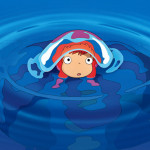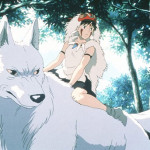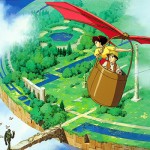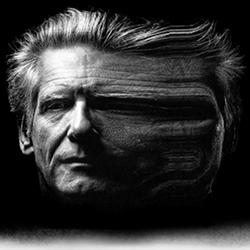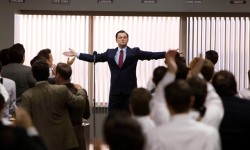
TIFF’s Spirited Away: The Films of Studio Ghibli Review: Nausicaa of the Valley of the Wind (1984)

Cast: Sumi Shimamoto, Mahito Tsujimura, Hisako Kyôda
Director: Hayao Miyazaki
Country: Japan
Genre: Animation | Action | Adventure | Sci-Fi | Fantasy | Romance
Editor’s Notes: The following review is part of our coverage for TIFF’s Spirited Away: The Films of Studio Ghibli which runs from December 12th to December 31st at TIFF Bell Lightbox. For more information on upcoming TIFF film series visit http://tiff.net and follow TIFF on Twitter at @TIFF_NET.
Though technically legendary film director Hayao Miyazaki’s second feature length animated film, Nausicaa of the Valley of the Wind is the first film that captured the master’s career long preoccupations with fanciful machines of flight, devastating environmental interference by a short-sighted mankind seemingly hellbent on its own destruction, and fantastical worlds of immense imagination from the mind of a creative and conscientious artist. Its animation techniques lack the expressive depth and aesthetic complexity of his more recent films, and its desolate post-apocalyptic wastelands are heavily influenced by animators like Ralph Bakshi, but the imaginative spirit still abounds and the preoccupations of one of animation’s (and cinema’s) greatest auteurs begin to take shape in his phenomenal second outing.
Though technically legendary film director Hayao Miyazaki’s second feature length animated film, Nausicaa of the Valley of the Wind is the first film that captured the master’s career long preoccupations with fanciful machines of flight, devastating environmental interference by a short-sighted mankind seemingly hellbent on its own destruction…
Influenced by the toxicity of the mercury poisoned waters that surrounded him and the difficult and unique set of life experiences of a boy that lived through World War II in Japan, Miyazaki asserts his environmental conscientiousness and pacifist views through beautiful but toxic worlds filled with large sentient insects, perfect evolutionary specimens to take the helm as the successor to a humanity doomed by its own short-sighted nature. Miyazaki has harbored a career long obsession with the freedom induced by flight and wonderful machines that fill the sky like behemoths cast off of the land for its sins against nature, but such fixations are natural for a man who saw the horrific realities and terrifying machinery of war at a young age. The relatively small island of Japan had the dubious privilege of being humanity’s first test candidate for our most devastating forms of destruction yet, so it becomes easy to see the roots of his lifelong preoccupation with environmentalism and the very real problems that environmental destruction have presented themselves in his life. 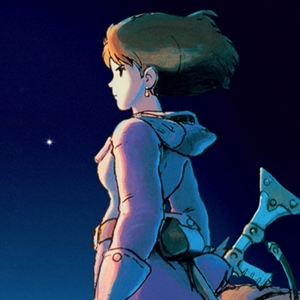 In Nausicaa, Miyazaki has essentially doomed humanity to reap the rewards of its transgressions against nature as they fight creatures of immense evolutionary superiority and mind-boggling numbers. The land has been rendered toxic to the very creatures that have destroyed it, but in man’s place new magnificent flora and fauna emerge and flourish and they use man’s sins as punishment as they spit the toxins left behind into the air rendering it unbreathable to its transgressors. The female protagonist Nausicaa eventually makes peace with the sentient beings and discovers the true cost of humanity’s short-sightedness, but the evolutionarily superior creatures of our own accidental creation are left to wander the Earth in an ominous reminder of our own expendability. Miyazaki doesn’t condemn humanity to an immediate death, but hints at the dire costs of transgressions against that which sustains us. We may not be able to flourish in the desolate landscapes of our own creation, but as evidenced in wastelands and toxic grounds that exist on the planet today, life will find a way to emerge and flourish despite our best unintentional efforts to destroy it.
In Nausicaa, Miyazaki has essentially doomed humanity to reap the rewards of its transgressions against nature as they fight creatures of immense evolutionary superiority and mind-boggling numbers. The land has been rendered toxic to the very creatures that have destroyed it, but in man’s place new magnificent flora and fauna emerge and flourish and they use man’s sins as punishment as they spit the toxins left behind into the air rendering it unbreathable to its transgressors. The female protagonist Nausicaa eventually makes peace with the sentient beings and discovers the true cost of humanity’s short-sightedness, but the evolutionarily superior creatures of our own accidental creation are left to wander the Earth in an ominous reminder of our own expendability. Miyazaki doesn’t condemn humanity to an immediate death, but hints at the dire costs of transgressions against that which sustains us. We may not be able to flourish in the desolate landscapes of our own creation, but as evidenced in wastelands and toxic grounds that exist on the planet today, life will find a way to emerge and flourish despite our best unintentional efforts to destroy it.
Miyazaki reveals the soul of a beautiful dreamer in Nausicaa, and his beautiful dreams continue to spark our imaginations nearly thirty years later.
While Nausicaa of the Valley of the Wind isn’t a direct product of Studio Ghibli, it is a film that was critical to the studio’s creation and the true launching point of one of cinema’s greatest auteurs. Its animation techniques are rudimentary as compared to the master’s more contemporary works, but the elements that would act as the moral undercurrent for his entire body of work are established in fantastical splendor. The sky-bound war machines that haunted his childhood dreams would permeate his body of work, but Miyazaki attempts to reclaim the skies from war-mongers and industrialists and give it back to our gentler imaginative flights of fancy. Despite the bleakness of the desolate wastelands of Nausicaa, Miyazaki still harbors a tumultuous love affair with humanity and its unwitting sins as he shows our capacity for thoughtfulness, but that thoughtful virtuousness is at constant odds with the desperate actions forged from our innermost fears. Miyazaki reveals the soul of a beautiful dreamer in Nausicaa, and his beautiful dreams continue to spark our imaginations nearly thirty years later.
Related Posts
![]()
Matthew Blevins
![]()
Latest posts by Matthew Blevins (see all)


